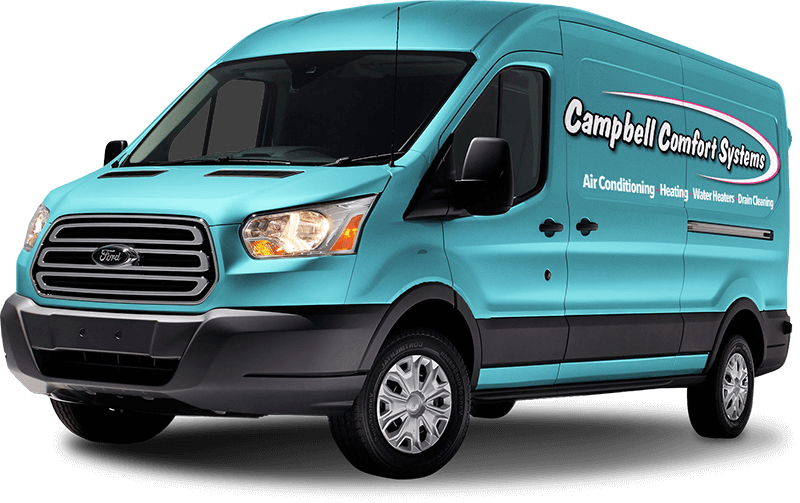
Homeowners often face one of the biggest problems during winter: heating their homes without becoming expensive. As a homeowner, you take multiple steps to ensure you’re not stuck paying a $500 electric bill every month in the cold season.
You try sealing cracks, improving your insulation, and doubling up on your clothing. Also, you keep your thermostat at a set temperature and refuse to change it no matter how cold it gets. However, this could be why your electric bill is so high.
When your furnace tries to heat to a set temperature, it works harder than needed. Instead of keeping your thermostat on a set temperature, consider upgrading to a programmable thermostat. This will allow the furnace to heat to a comfortable temperature without you having to make changes.
For example, you may forget to turn your furnace down while away. During this time, your furnace is running nonstop.
This is a common issue with a non-programmable thermostat; it keeps using energy when it doesn’t have to. However, an automatic thermostat allows you to adjust settings only to run when needed.
You can program the auto thermostat to lower 10 degrees before you leave, and it will stay that way until you want it to adjust above the set temperature. Also, it’s ideal for when you’re going to bed at night.
Program the automatic thermostat to lower 8 degrees and rise 8 degrees again when everyone wakes up. As a result, a programmable thermostat helps limit the stress on the furnace and keeps your electric bills down.
Thermostat Settings
How exactly does an automatic thermostat work, and why is it better than a manual thermostat? These are great questions, and we will answer them to help you understand a programmable thermostat better.
On your auto thermostat, you’ll see two different degrees. The first degree is the actual temperature of your home. Your desired degree is the second number; your system will turn on to reach this degree.
While your family is out of the home for the day, it’s best to set it at 68 degrees. This is recommended as your furnace won’t continually run.
In the event that you find it warm when you come home, press the down button on your auto thermostat to reach a lower temperature, say 64.
The first number will display 68 degrees, and the second will show 64 degrees. Your furnace won’t kick on again until the temperature in your home is below 64 degrees.
Different modes on your programmable thermostat allow you to make your home comfortable. One of these modes is the auto mode; your thermostat will likely spend most of its time on this.
During the summertime, you may have your thermostat set at 70 degrees. When the thermostat notices it getting warmer in your home, it will turn the air conditioning unit on to lower the temperature.
Another mode you’ll notice is the “on mode.” This will probably get used less than the other options, as it’s only needed to help circulate the air in your home.
If you notice that the air is stale, you should set your thermostat to this mode. Also, keep in mind that your unit will continue to run until you turn this mode off.
Next is the heating and cooling mode. This is pretty straightforward as it tells the thermostat if it should turn on the furnace or the air conditioning unit.
The run-and-hold mode is one of the best features of a programmable thermostat. This is how you tell your thermostat the exact temperature you want your furnace or air conditioner to be on. For example, you can set it to be on a certain degree while sleeping and program it to go 10 degrees higher when you get up.
Also, setting your thermostat ten degrees lower is best to help you save money. It’ll also help you sleep better because cooler temperatures keep you in a REM sleep longer.
With auto mode, the thermostat kicks on when it notices a drop or rise in the temperature. Sometimes you don’t always need the furnace or air conditioner to turn on as soon as there’s a change in degree.
However, your furnace or air conditioner won’t turn on with the run mode until you want it to. For example, the desired temperature is 70 degrees, and you can program the thermostat not to turn on until the temperature lowers to 65 degrees.
Now, what about the hold mode? The hold mode allows you to cancel your pre-program settings on the thermostat.
Your thermostat will likely be in run mode most of the time. If your daily schedule never changes, then there’s nothing to worry about. However, if you have a change in your daily schedule and can’t change your thermostat, then the hold mode allows you to switch it to auto mode.
It’s great because you don’t have to keep changing your thermostat; it lets you have it at a set temperature when you’re away. Remember to keep your temperature 10 degrees lower while you’re away.
This will help you save 5-15% on your bills yearly since you use less energy. If you have it set this way on auto mode, you can use hold mode to ensure you use less energy while away.
Install a Programmable Thermostat
Are you ready to switch your non-programmable thermostat to a programmable thermostat? If so, book a call with our HVAC technicians to install an automatic thermostat in your home.Our team can show you how to program the thermostat, help explain settings, and give tips on where to place the thermostat. So, give us a call at 1-856-492-6244 today.

